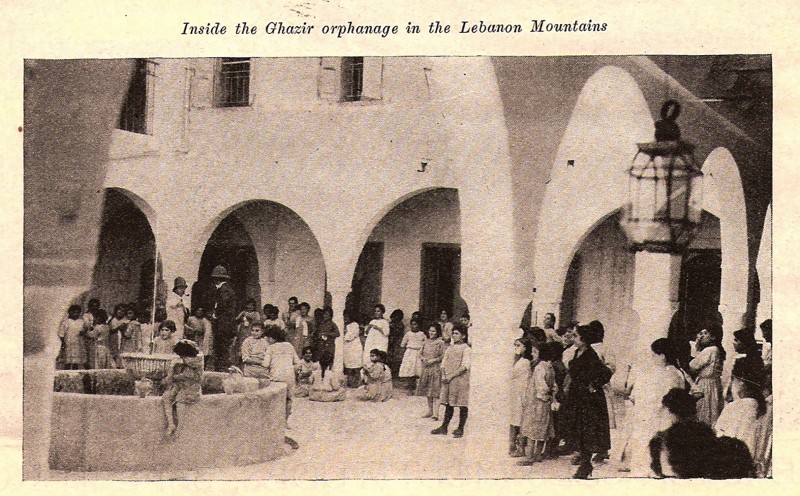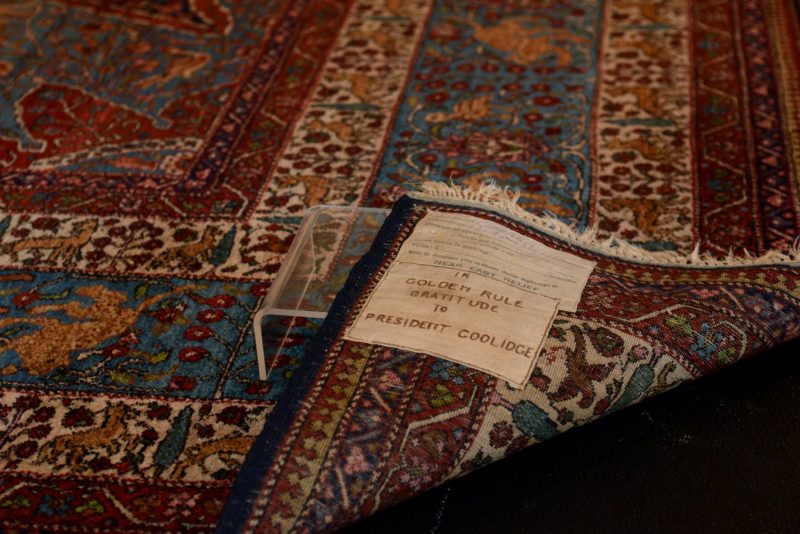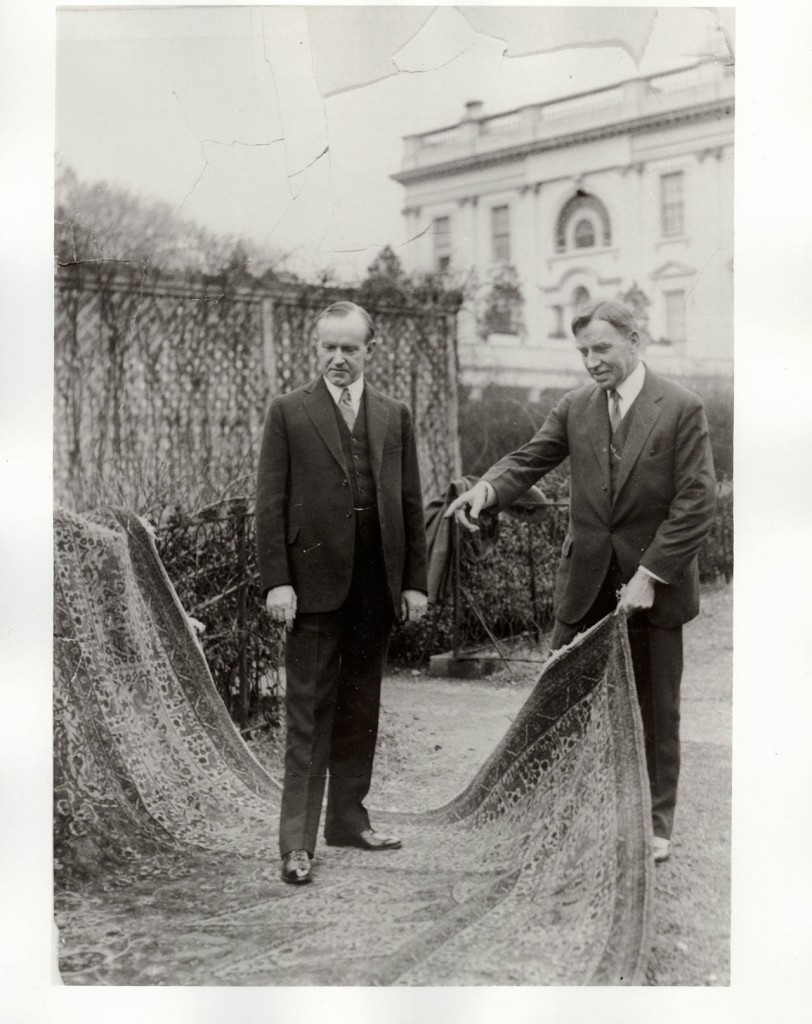A Single Thread, Part Three: The Girls of Ghazir
This is the third and final dispatch in a series about Armenian textiles. You can read the first installment here and the second installment here.
One of the most enduring legacies to emerge from Near East Relief industries is that of the Armenian Orphan Rug, also known as the Ghazir Orphan’s Rug. Like so many other orphanages, Ghazir emphasized skills-based training for the young girls who lived there. The relief workers who cared for the young orphans saw an opportunity to not only teach them invaluable life skills, but also provide them with a connection to important cultural arts and traditions.
The Ghazir orphanage gained a reputation for producing beautiful textiles due in large part to the immense skill of the young women and girls who called the orphanage home.

The Girls of Ghazir, date unknown

Home to hundreds of orphans throughout the 1920s, Ghazir was in many ways similar to the other Near East Relief orphanages. Healthcare, education, and general wellbeing were prioritized in order to provide the orphans with a sense of normalcy after being refugees for so long. For many of the orphans, day to day life included taking trade-based classes that would prepare them for life after the orphanage. In Ghazir, thanks in part to the historical Ottoman silk industry that was once thriving in the city, that education centered on textiles, more specifically rug making.
Image Right: Inside the Ghazir Orphanage, c. 1923
Prior to the fall of the Ottoman Empire, Ghazir, located in modern day Lebanon, had been home to a robust silk industry that involved sericulture, the art of raising silkworms, that resulted in fine textiles and woven art coming from the city for centuries. Like many other former Ottoman Empire cities, the combination of the fall of the Empire and the aftermath of World War I greatly impacted the textile industry in the city.
The bones of this industry provided the Ghazir orphanage with the infrastructure and educated workers to help teach the orphans traditional textile work. The results are breathtaking.

Orphan girls with two rugs. The rug on the left is for President Calvin Coolidge, c 1925

Starting in 1924, the orphans of Ghazir began work on what is now known as the Armenian Orphan Rug. Conservative estimates state that it took around four hundred orphans over eighteen months to complete the rug. As a token of appreciation to Near East Relief and the United States as a whole for the work done in response to the Genocide, the rug was meant to symbolize the impact relief efforts had on the Armenian refugees. The inscription on the back of the rug reads, “In Golden Rule Gratitude to Coolidge,” referencing the highly successful and pioneering Golden Rule Sunday campaigns that Near East Relief used to raise relief funds throughout the early 1920s.
Image Left: Detail of sewn inscription to President Calvin Coolidge
The rug was presented to President Calvin Coolidge on December 4, 1925 by a few of the orphans themselves and by Near East Relief board member John H. Finley.

John H. Finley presents the Armenian Orphan Rug to President Calvin Coolidge, c. 1925
This beautiful rug woven by children in Lebanon has been received. This, their expression of gratitude for what we’ve been able to do for this country for their aid, is accepted by me as a token of their goodwill to the people of the United States who have assisted in the work of the Near East Relief. Please extend to these orphans my thanks and the thanks of the vast number of our citizens whose generosity this labor of love is intended to acknowledge. The rug has a place of honor in the White House where it will be a daily symbol of goodwill on earth.
The rug was made using religious iconography that has been part of many traditional designs since the 4th century. Many of the stories of Adam and Eve and the Garden of Eden feature prominently alongside other commonly recurring images, such as lions, intricate flowers, and ornate birds. The middle of the rug features a medallion that showcases the truly outstanding skill and craftsmanship of the hundreds of girls who worked on it.

Girls display the Armenian Orphan Rug, c. 1925
Following his time in office, President Coolidge took the carpet with him where he kept it on display in his home. Later, his widow, Grace Goodhue, kept the rug in her home until she passed in 1957. It was later returned to the White House by the Coolidge family in 1982, where it was placed into storage. Since then, it has been displayed off and on. Most recently, the rug was featured in a 2014 White House exhibition “Thank you to the United States: Three Gifts to Presidents in Gratitude for American Generosity Abroad”, that also included gifts to Herbert Hoover and then current President Barack Obama.

Color image of the Armenian Orphan Rug
While the visibility of the Girls of Ghazir is much greater than many other orphanages, there are hundreds of other similar stories. The impact that relief efforts had on not only the lives of individuals, but on industries as a whole is enormous. There is no doubt that the textile industry in the former Ottoman Empire would have recovered on its own following World War I. However, the work done by Near East Relief and other similar organizations contributed to this recovery by ensuring that young men and women had the vital skills needed to work and thrive in these industries.
In doing so, relief workers helped to strengthen connections to centuries old textile art that was threatened by the Armenian Genocide. It is thanks to the men and women who survived the genocide that these traditional art forms survive both in Armenia as the wider Armenian diaspora today.
To learn more about the work being done today, visit: www.neareast.org
The Near East Foundation is a U.S.-based international development NGO leading innovative social and economic change in the Middle East and Africa for almost 100 years. Founded in 1915, NEF helps build more sustainable, prosperous, and inclusive communities through education, governance, and economic development initiatives. NEF field staff – all of them from the countries in which they work – partner with local organizations to implement grassroots solutions and to empower citizens through “knowledge, voice, and enterprise.”
